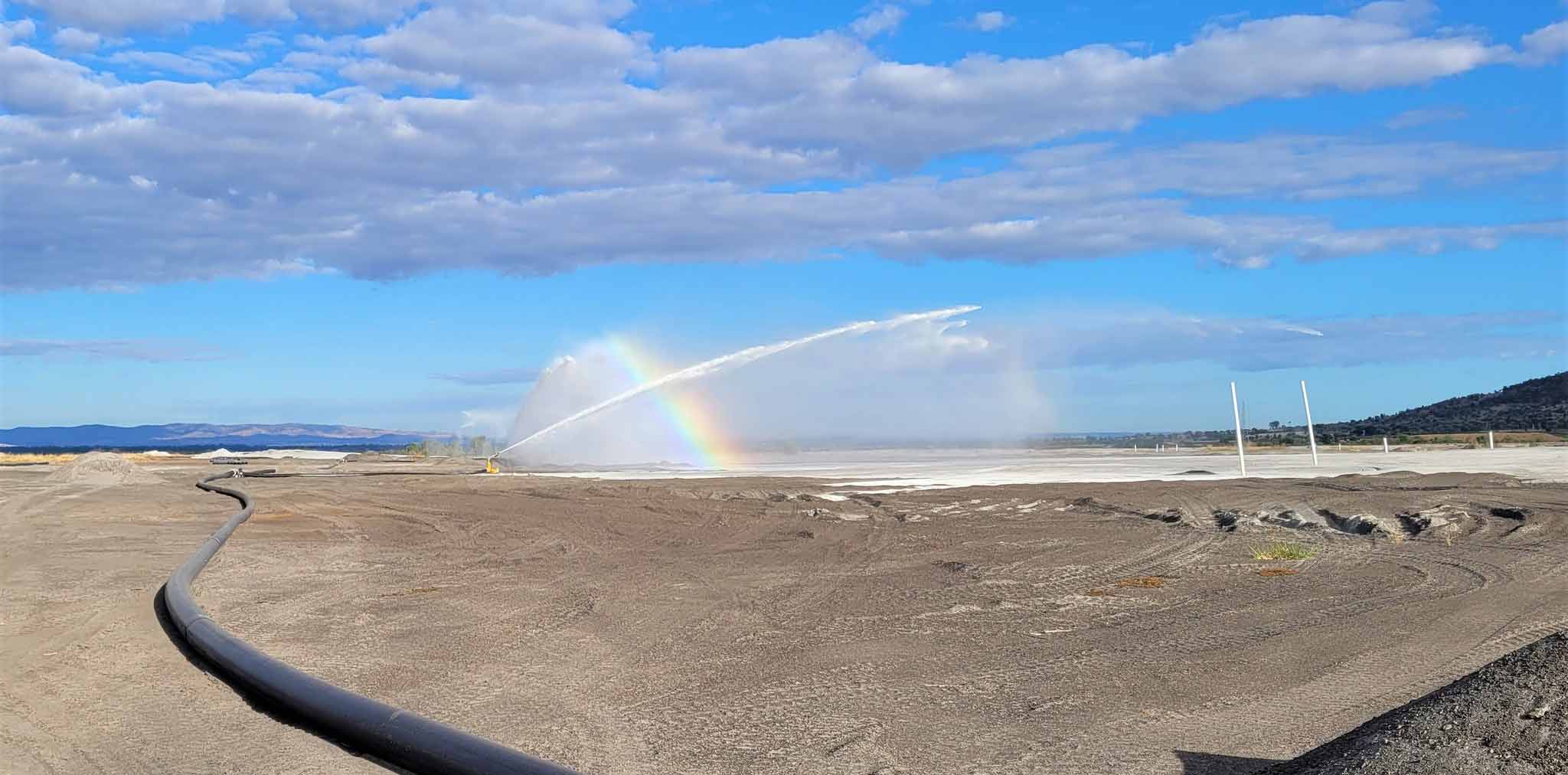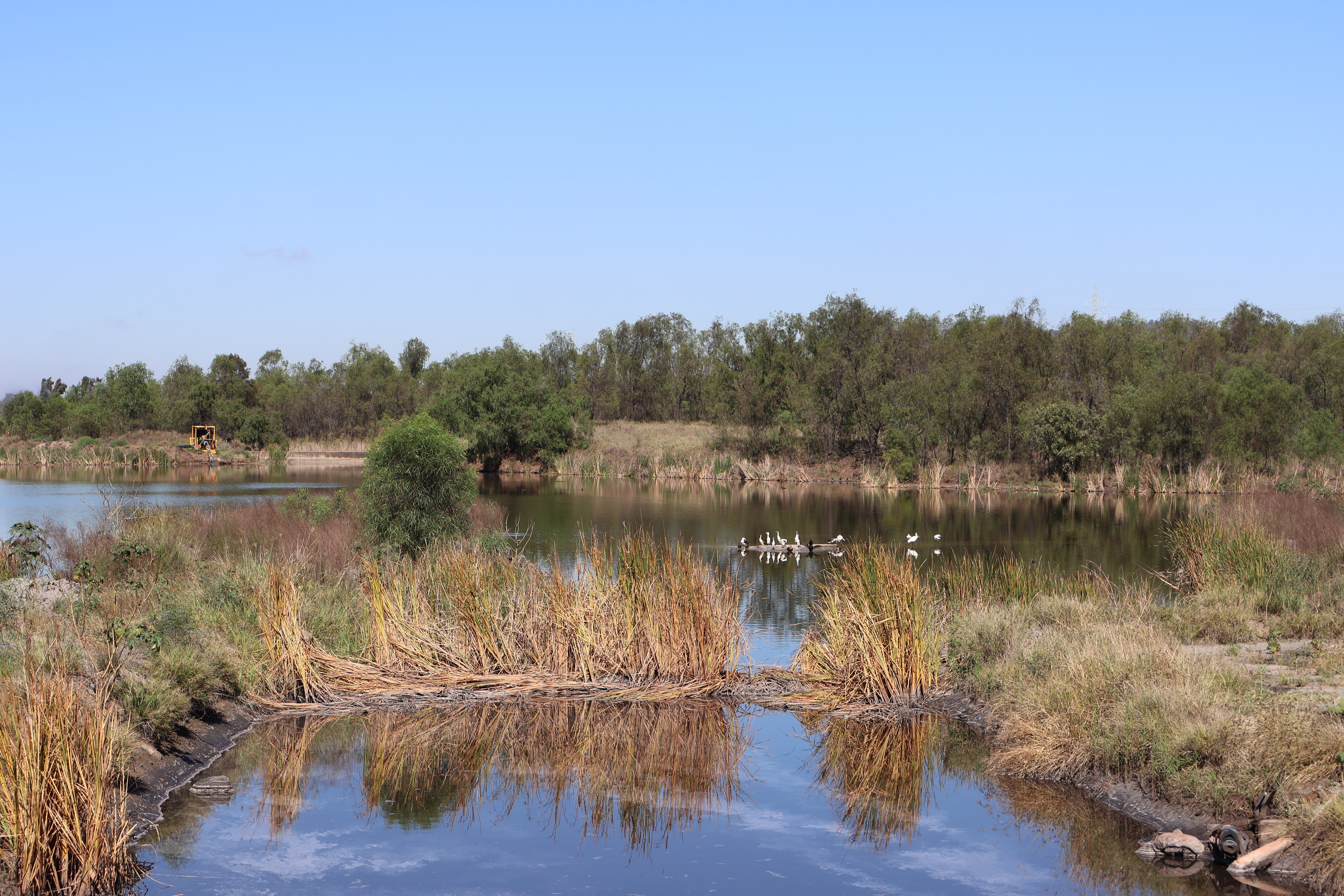Increasing water efficiency at Callide Power Station
A new, larger set of water sprays reaching a span of nearly 100 metres have recently been installed at Callide Power Station to aid with dust control, as part of improvements made to the ash and water management systems.
A by-product of coal combustion, fly ash is often shipped away to be used in the cement and construction industries – including buildings - while bottom boiler ash can be used in the construction of roads; what remains is stored in ash dams that are built on site.
In fact, the ash dams themselves are partially built using the ash!
“We use bottom boiler ash and a general fill material for the construction of ash cells, which is then filled with fly ash that has been mixed with water, and pumped through pipelines from where it is discharged into the storage cells,” said Bruce Robson, Supervisor Waste Containment Facilities.
“A newly built ash cell, spanning 18.4 hectares, was created using bottom boiler ash and other on-site materials to accommodate station-pumped ash. We also employed this material in constructing roads within our waste containment facility."
_850w.jpg)
The construction of this ash cell included using bottom boiler ash from Callide Power Station.
Those cells can dry out, so in order to manage dust levels, sprinklers are used to wet the ash and prevent excessive dust.
“There’s 170 litres a second of water going through the new sprinkler system, and they keep the ash settled,” Bruce said.
Callide Power Station has a water reclaim dam from which it recycles water for use all over the station and in particular the ashing process.
During the construction of this dam in the 1980s it was identified that, due to the large amount of fractured rock in the foundation, it would not be possible to stop seepage from the dam; so, the wall was constructed with a seepage blanket, essentially a sand filter, inside it.
“The seepage that goes through the filter is then recovered and pumped back into the dam,” Bruce said.
Known as the Seepage Recovery System, it plays a pivotal role in managing any water seepage from our main water storage facility.
“We also have bore pumps all the way around the boundary on the southern, western, and eastern ends, and they recover a fair volume of water every day from below ground. This, too, is returned to the dam.”

CS Energy is adding more bore pumps to ensure as much water as possible can be reclaimed.
“We reclaim about 4ML a day of reuseable water that we can put into our cooling system, and the rest of it gets used around the power station,” Bruce said.
“We utilise reclaimed ash water in the slurry system and pumping systems. Two tanks, each with a capacity of 1.7 million litres located at the northern end of the station, are consistently refilled throughout the day. These tanks serve as a constant water supply for various systems across the site. That saves us using raw water.”
Ongoing concerns related to supplying water to the station include the persistent issue of ash buildup along the channel that feeds the water reclaim pumps.
“Some ash had built up around the water reclaim pumps, so we’ve used a little dredge with a drag flow pump on it to help clear that up,” Bruce said.
As part of our ongoing water management improvement program, we are considering several ways to make our water processes more efficient.
CS Energy is currently undertaking an overhaul of the water treatment plant so that it’s operating at peak efficiency.

CS Energy shares its sites with a number of species who live and swim in our dams.